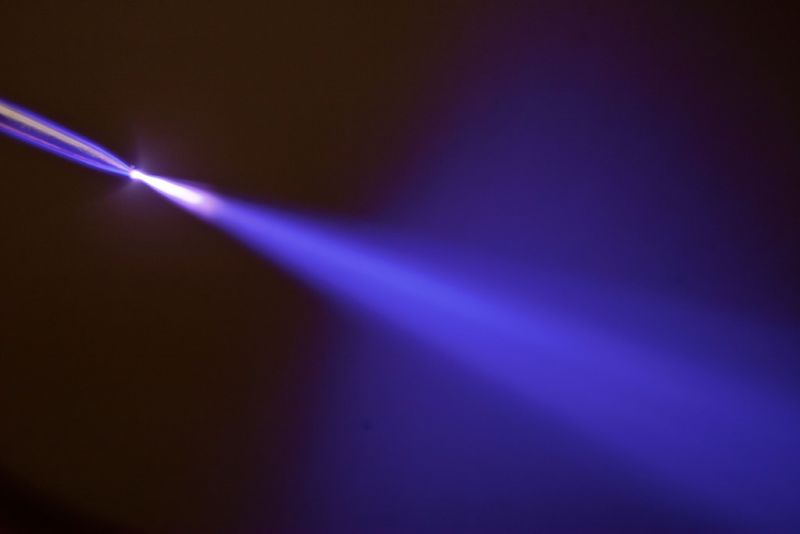Pulsed Corona Discharge Removes Pharmaceutical Residues Energy Efficiently from Wastewater
Published on by Water Network Research, Official research team of The Water Network in Academic
According to practical tests, pulsed corona discharge (PCD) may significantly reduce the environmental burden of pharmaceutical residues.
A doctoral dissertation to undergo a public examination at Lappeenranta University of Technology (LUT) examines the removal of harmful organic substances, such as pharmaceutical residues, energy efficiently from wastewater using only electricity.

Representative image, Corona Discharge, Source: Flickr, Author: Sarah Cartwright, Labeled for Reuse
According to the pilot tests in the chemical technology dissertation by Petri Ajo, M.Sc. (Tech.) specialising in environmental technology, pharmaceutical residues, their variants and other similar compounds degrade easily from wastewater because the process is non-selective.
PCD is based on the instantaneous contact produced by an electric discharge between a plasma zone and water. In this phenomenon, water molecules and oxygen in the atmosphere create strong oxidants which degrade organic compounds into water and carbon dioxide. The study examined the formation of oxidants on the plasma-liquid-gas interface and their behaviour in the process.
Practical studies on wastewater from three locations
The study also revealed that the momentary reformation of pharmaceutical substances can be considered a normal part of the reaction chain in the purification process. It nevertheless makes the comparison of different technologies more difficult and highlights the importance of a non-selective process. Pharmaceutical residues were degraded from the effluents of the wastewater treatment plants of Toikansuo in Lappeenranta and the Rinnekoti foundation in Espoo and from the untreated sewage of the South Karelia Central Hospital.
The results gave important new information on energy efficient oxidation, which is significant also in terms of the further development of the technology. The efficiency of the process depends e.g. on temperature, flow rates, delays, and the location of the process in the wastewater treatment chain.
Ajo's dissertation entitled Hydroxyl radical behavior in water treatment with gas-phase pulsed corona discharge will undergo a public examination on 29 March 2018 at 12:00 noon in LUT's Student Union House auditorium. The opponent will be Docent Wilfred Hoeben from TU Eindhoven, the Netherlands. Docent Sergei Preis from Lappeenranta University of Technology will be acting as the custos.
The dissertation has been published in the university's publication series Acta Universitatis Lappeenrantaensis, publication number 793. ISBN 978-952-335-212-4 and ISSN 1456-4491.
The dissertation is available in the LUTPub database of Lappeenranta University of Technology at http://urn.fi/URN:ISBN:978-952-335-213-1 . Printed copies can be purchased from the Aalef bookstore, tel. +358 44 744 5511, or kirjakauppa(at)aalef.fi, and from the LUT Shop online store at https://lutshop.lut.fi.
Media
Taxonomy
- Treatment
- Reclaimed Wastewater
- Treatment Methods
- Wastewater Treatment
- Filtration
- water treatment